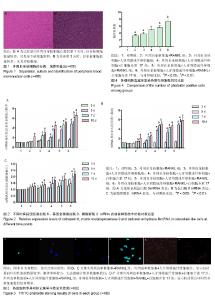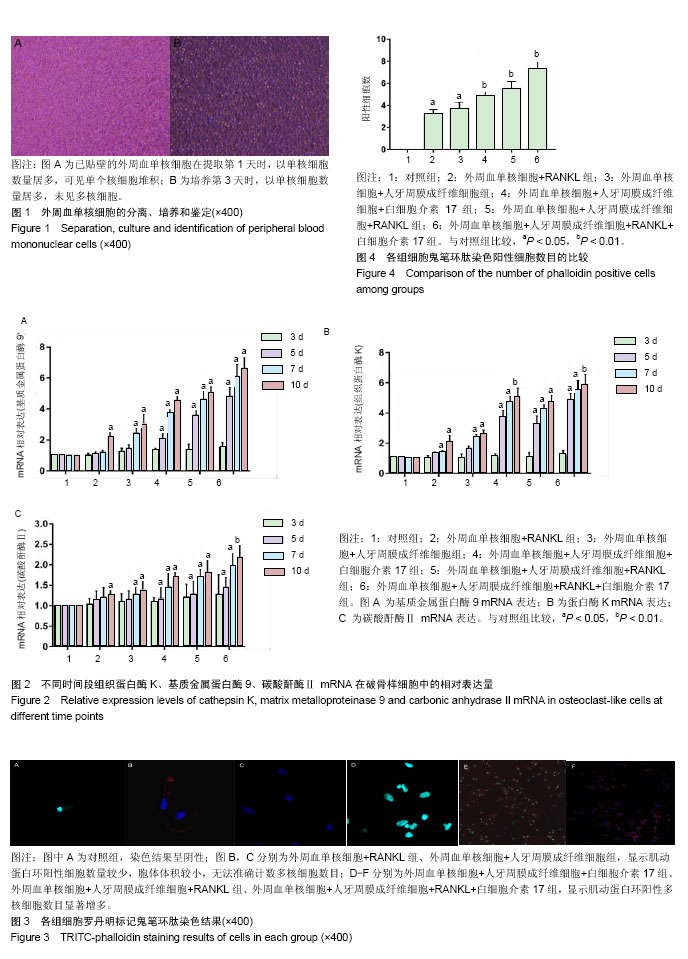| [1] Makrygiannakis MA, Kaklamanos EG, Athanasiou AE.Effects of systemic medication on root resorption associated with orthodontic tooth movement: a systematic review of animal studies. Eur J Orthod. 2018 Jul 9. [Epub ahead of print]. [2] Yashin D, Dalci O, Almuzian M, et al.Markers in blood and saliva for prediction of orthodontically induced inflammatory root resorption: a retrospective case controlled-study. Prog Orthod. 2017;18(1):27.[3] 孟冉冉,宋萌,潘劲松,等.正畸牙移动相关信号通路研究进展[J]. 现代生物医学进展,2015,15(20): 3961-3913.[4] Nakano Y, Yamaguchi M, Fujita S,et al.Expressions of RANKL/RANK and M-CSF/c-fms in root resorption lacunae in rat molar by heavy orthodontic force. Eur J Orthod. 2011; 33(4):335-343.[5] 李光辉,潘晓岗.参与正畸牙移动的相关因子研究进展[J].口腔医学,2015,35(6):508-512.[6] Baloul SS.Osteoclastogenesis and Osteogenesis during Tooth Movement. Front Oral Biol. 2016;18:75-79.[7] Martins CA, Leyhausen G, Volk J, et al. Effects of alendronate on osteoclast formation and activity in vitro. J Endod. 2015; 41(1):45-49.[8] Zhang J, Xu H, Han Z, et al.Pulsed electromagnetic field inhibits RANKL-dependent osteoclastic differentiation in RAW264.7 cells through the Ca(2+)-calcineurin-NFATc1 signaling pathway. Biochem Biophys Res Commun. 2017; 482(2):289-295.[9] van Heerden B, Kasonga A, Kruger MC, et al.Palmitoleic Acid Inhibits RANKL-Induced Osteoclastogenesis and Bone Resorption by Suppressing NF-kappaB and MAPK Signalling Pathways. Nutrients. Nutrients. 2017;9(5). pii: E441. [10] Feller L, Khammissa RA, Thomadakis G, et al.Apical External Root Resorption and Repair in Orthodontic Tooth Movement: Biological Events. Biomed Res Int. 2016;2016:4864195.[11] Hellsing E, Hammarstrom L.The hyaline zone and associated root surface changes in experimental orthodontics in rats: a light and scanning electron microscope study. Eur J Orthod. 1996;18(1):11-18.[12] Roscoe MG, Meira JB, Cattaneo PM.Association of orthodontic force system and root resorption: A systematic review. Am J Orthod Dentofacial Orthop. 2015;147(5): 610-626.[13] Walsh MC, Kim N, Kadono Y, et al.Osteoimmunology: interplay between the immune system and bone metabolism. Annu Rev Immunol. 2006;24:33-63. Review.[14] Chesné J, Braza F, Mahay G,et al.IL-17 in severe asthma. Where do we stand?. Am J Respir Crit Care Med. 2014;190 (10):1094-1101.[15] Adamopoulos IE, Suzuki E, Chao CC, et al.IL-17A gene transfer induces bone loss and epidermal hyperplasia associated with psoriatic arthritis.Ann Rheum Dis.2015;74(6): 1284-1292.[16] Ling Y, Puel A. IL-17 and infections. Actas Dermosifiliogr. 2014;105 Suppl 1:34-40.[17] Wang ZX, Yang L, Tan JY, et al.[Effects of T helper 1 cells and T helper 17 cells secreting cytokines on rat models of experimental periodontitis] Zhonghua Kou Qiang Yi Xue Za Zhi. 2017;52(12):740-747..[18] Gaffen SL.Structure and signalling in the IL-17 receptor family. Nat Rev Immunol. 2009;9(8):556-567.[19] Takahashi K, Azuma T, Motohira H, et al.The potential role of interleukin-17 in the immunopathology of periodontal disease. J Clin Periodontol. 2005;32(4):369-374.[20] Chen W, Wang J, Xu Z,et al. Apremilast Ameliorates Experimental Arthritis via Suppression of Th1 and Th17 Cells and Enhancement of CD4(+)Foxp3(+) Regulatory T Cells Differentiation. Front Immunol. 2018;9:1662. [21] Kotake S, Yago T, Kawamoto M, et al. Role of osteoclasts and interleukin-17 in the pathogenesis of rheumatoid arthritis: crucial 'human osteoclastology'. J Bone Miner Metab. 2012; 30(2):125-135.[22] Chitrapriya MN, Rao SR, Lavu V.Interleukin-17 and interleukin-18 levels in different stages of inflammatory periodontal disease. J Indian Soc Periodontol. 2015;19(1): 14-17.[23] Nakano Y, Yamaguchi M, Shimizu M, et al.Interleukin-17 is involved in orthodontically induced inflammatory root resorption in dental pulp cells. Am J Orthod Dentofacial Orthop. 2015;148(2):302-309.[24] Sims NA, Martin TJ.Coupling Signals between the Osteoclast and Osteoblast: How are Messages Transmitted between These Temporary Visitors to the Bone Surface?. Front Endocrinol (Lausanne). 2015;6:41.[25] Wang Q, Yao L, Xu K, et al.Madecassoside inhibits estrogen deficiency-induced osteoporosis by suppressing RANKL-induced osteoclastogenesis. J Cell Mol Med. 2018 Oct 19. [26] Kikuta J, Yamaguchi M, Shimizu M, et al.Notch signaling induces root resorption via RANKL and IL-6 from hPDL cells. J Dent Res. 2015;94(1):140-147.[27] de Vries TJ, Yousovich J, Schoenmaker T, et al.Tumor necrosis factor-alpha antagonist infliximab inhibits osteoclast formation of peripheral blood mononuclear cells but does not affect periodontal ligament fibroblast-mediated osteoclast formation. J Periodontal Res. 2016 ;51(2):186-195.[28] Matsuzaki K, Udagawa N, Takahashi N, et al.Osteoclast differentiation factor (ODF) induces osteoclast-like cell formation in human peripheral blood mononuclear cell cultures. Biochem Biophys Res Commun. 1998;246(1): 199-204.[29] Cao H, Kou X, Yang R, et al.Force-induced Adrb2 in periodontal ligament cells promotes tooth movement. J Dent Res. 2014;93(11):1163-1169.[30] 李琳娟,黎敏,彭娟敏,等.白细胞介素17对人牙周膜成纤维细胞表达RANKL、OPG的影响[J].重庆医学, 2017,46(23): 3177-3179.[31] Ye S, Fujiwara T, Zhou J, et al.LIS1 Regulates Osteoclastogenesis through Modulation of M-SCF and RANKL Signaling Pathways and CDC42. Int J Biol Sci. 2016;12(12):1488-1499.[32] Bloemen V, Schoenmaker T, de Vries TJ, et al.Direct cell-cell contact between periodontal ligament fibroblasts and osteoclast precursors synergistically increases the expression of genes related to osteoclastogenesis. J Cell Physiol. 2010; 222(3):565-573. [33] Weltman B, Vig KW, Fields HW, et al.Root resorption associated with orthodontic tooth movement: a systematic review. Am J Orthod Dentofacial Orthop. 2010;137(4): 462-476; discussion 12A. |

